How to Fix a Muddy Yard – if you have mud, you need solutions. I hope this post helps you quickly solve your soil and poor drainage issues and gets you started toward planting a sustainable rain garden (or other permanent solution).
Every gardener will tell you that their plot is the worst. It is the coldest, hottest, driest, weediest, awkwardest, sandiest, chalkiest
“You have no idea…”, they all say.
Believe me, I do have an idea, and I am here to put an end to the jockeying. I don’t care if you live on the Cliffs of Moor, the Dunes of Cape Cod, the side of Pikes Peak, the edge of the literal Outback, or in the tundra of Canada. The hands-down hardest place to make a garden is in a mud pit.
A muddy mess of a backyard is demoralizing. When it is wet, it’s impossible to walk on; it covers you in its gunk, looks terrible, and gives you absolutely nothing for your efforts. (Thoughts and prayers for those of you with dogs!) And when it is dry, it becomes an impenetrable rock. It constantly makes itself worse the longer it sits (oh, the smell of stagnant water!), and of course, all the most vicious of backyard bugs are drawn to its unique grotesqueness. Muddy yards are the worst.
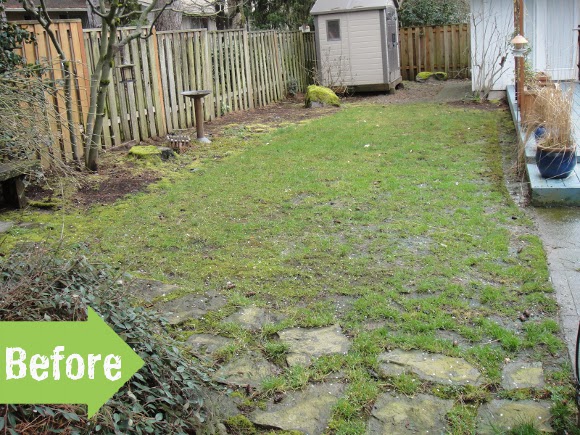
How to Fix a Muddy Backyard
A mucky mess is fixable – but before we talk about muddy backyard solutions, you need to understand two things first.
- Everything you might want to do in your garden is secondary to the mud issue. Stop all other plans and deal with the water first – dealing with drainage issues has the potential to change the entire function of your yard’s ecosystem. The mud controls everything and trumps everything … ALWAYS SOLVE A DRAINAGE PROBLEM FIRST. And… (to answer the most common question about muddy backyard fixes…)
- NO, PLANTS CAN’T FIX DRAINAGE PROBLEMS. Why does everyone think this? Water-loving plants can deal with wet conditions (as in, they will survive and maybe even thrive, and I’ll talk about some of them below) – but they are not mops. Plants are awesome and can do amazing things, but sopping up too much water is not one of them. Stop thinking plants can save you from the flood – and refer back to my first point – fix the drainage issue!
Assessing the Muddy Backyard
If you have mud, it is either because your soil can’t hold any more liquid or because the liquid is trapped. Most likely, it is both. The problem with mud is that once you have it, it often propels you into an ever-worsening downward cycle situation where the mud perpetuates even more mud.
Why?
Healthy draining soil has air pockets in it that let water percolate through. The air pockets also create space for plant roots and all the organisms that live inside this underground ecosystem to move around. (want to learn more about all the amazing things in your soil?)
When soil is saturated, not only do things start to literally drown (so plants and organisms that create air pockets die and stop helping you correct the situation), but also smaller particles start to move around with the water, and when they settle (usually at the bottom of a soil layer), and this settling of small particles can make the drainage issue even worse.
We can use this silt settling to our advantage when we want to create a clay bottom pond (no liner required… the extra silty soil seals in the water!). But when it is in your backyard, and you don’t want it to be a boggy lake, the settling of smaller particles, coupled with the death of everything good, can turn a one-time flooding event into an ever-worsening cycle of yard decline.
How to Fix a Muddy Yard – Practical Solutions for dealing with the Mud
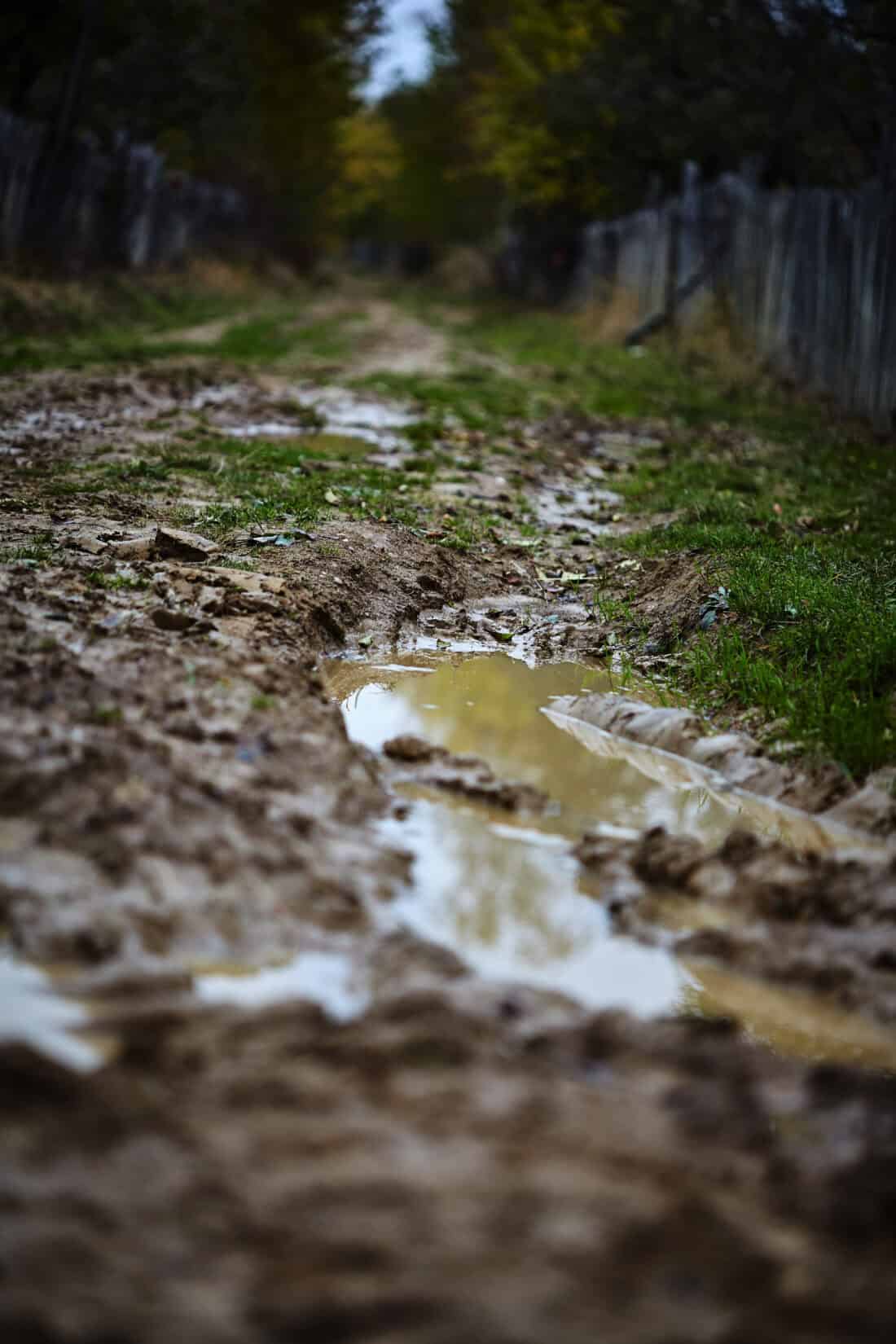
The solution to mud is to increase drainage and to protect the soil from over-compaction.
How to evaluate the severity of the drainage issue and identify specific problem areas:
- Observe where the most water gathers. Do you just have a few muddy spots? Or is it everywhere? Where are the last places to dry out? These are your low spots and your natural swales (or low-lying areas).
- Which way does the water run to drain? Is it getting stuck or trapped along its exit route?
- Where is the water coming from? Can it be re-routed? Can some of the water go another way?
- What is your soil like? It is compacted? Clay? Sand? Something in between?
Improve Drainage
You can improve drainage in a variety of ways. There are short-term solutions and better longer-term fixes.
In the short term, don’t walk on the muddy lawn. Every step will make it worse.
You can use a temporary fix like wood chips of pine flakes (like mulch) or pea gravel to give the surface some structure and make it usable (you can even use kitty litter). This isn’t going to be a long-term solution, though, and I would avoid doing these things unless you think you will ultimately be creating a permanent path in these areas.
These quick fix solutions will not be a permanent solution for a wet yard – they will only make it passable for now… the next time you get heavy rain, you will be right back where you started.
The best solution is a permanent fix. The most common and effective solution is to install a french drain or gravel trenches to redirect water flow. These are highly effective and typically work for most homeowners.
You can also re-grade to create swales or berms to divert excess water out and away from the yard. If you have a large area, you may need a larger drainage system that consists of a few French drains – but most average yards can be effectively drained with one or two properly placed drains.
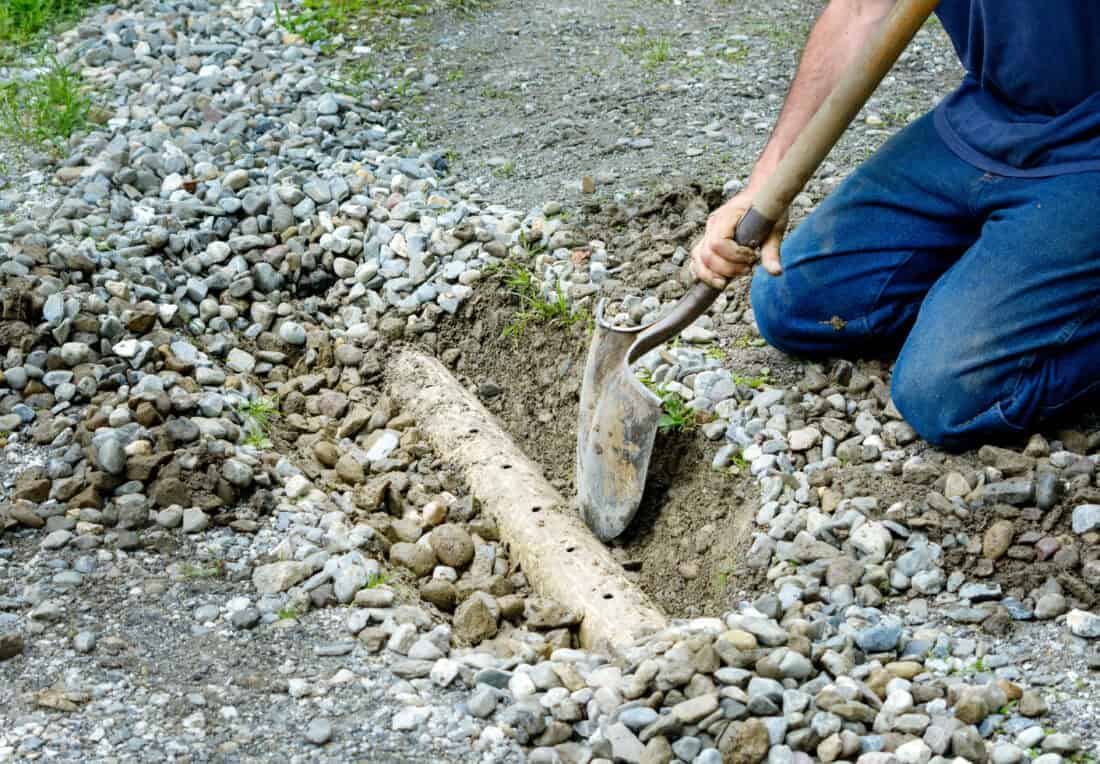
What is a French Drain?
A French drain is a simple pipe that is laid into an underground drainage trench that is partially filled with gravel (sometimes, you may also choose to line the trench with plastic, depending on the design).
The pipe is perforated on the top and not perforated on the bottom. (Typically, this is a 4-6 in diameter PVC type pipe). Generally, the pipe is wrapped in permeable fabric so that water can pass through, but sediment can not.
The trench is then backfilled with sand or gravel. It can be designed to allow for soil and plants to be re-established on top, but in most cases, the drainage ditch is along the side of a building or attached to a gutter downspout, and leaving gravel on top is easier for construction and potential future maintenance. The water collects in the ditch and flows into the top of the pipe, and this is directed away once it is in the pipe.
It is worth googling ‘French drain’ to get hundreds of examples of French drains in practical use.
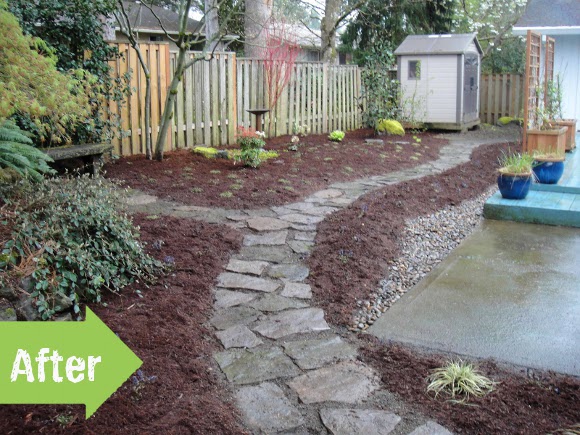
Implementing Hardscape Features can also help.
When we walk on wet soil, we exacerbate the drainage issue because we further compact the soil – making it even harder for the water to drain away. The solution – build a pathway using stepping stones or gravel to minimize direct contact with muddy areas. Alternatively, you can install a deck or a patio over the mud using budget-friendly materials like concrete pavers or composite wood. A concrete surface can also help. But in my experience, concrete is less ideal because it will not last very long if you don’t also fix the drainage issue. It will heave and crack and look terrible – it is hard to fix a damaged concrete surface. A paver solution will more easily allow you to deal with a heavy foot traffic area while also allowing you to reset anything that shifts with future wetness.
(I’m not a huge lover of composite woods – but in a very wet situation -these are the most cost-effective ways to build something over the mud that will also have longevity).
Enhance the Soil
Many people fail to simply dig a hole and look at the soil to understand what is happening. Understanding your soil type is the first thing you should do. Solutions for sandy soil and clay soil are different, and you will deal with them in different ways.
Clay soil will not drain as well as other types of soil- and sometimes the layer of clay is buried, and you don’t even know it is there. Dig a hole at least a foot deep, examine your soil for layers, and familiarize yourself with what it is like under there. Understand also that soil can vary widely across a yard (so dig multiple holes – look for areas that are different and get curious to figure out why the water isn’t moving).
Incorporate organic matter, such as compost, into the soil to improve its drainage capacity. In extreme situations, sand can also be added to increase drainage. You might also consider raised garden beds or container gardening to prevent soil compaction and give yourself healthier areas for growing that don’t require remediating your entire yard.
…..
LEARN MORE ABOUT SOIL!
>>>Renowned agronomist Dale Strickler (author of The Complete Guide to Restoring your Soil and The Drought Resilient Farm) recently joined PITH + VIGOR as part of our ongoing garden makers lecture series to share strategies for fixing your soil. Learn directly from him about how to fix your soil in his fascinating and empowering lecture. <<<
…..
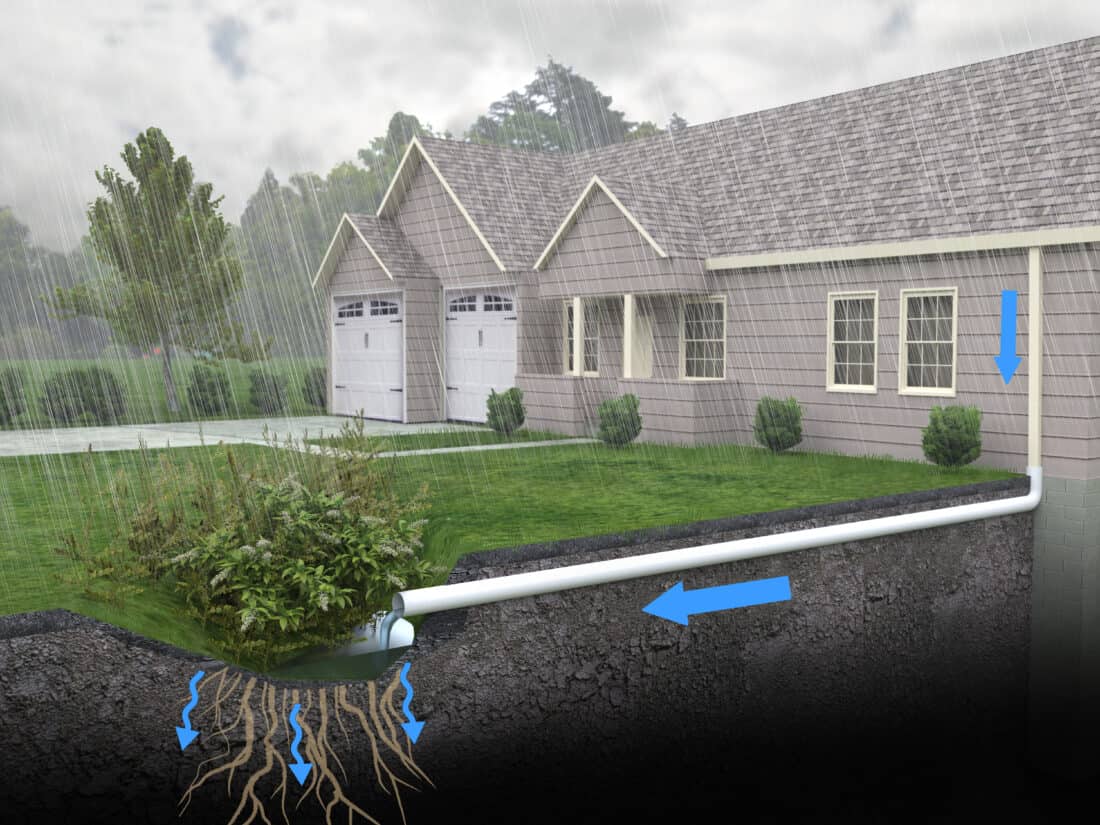
Use Ground Cover and plant a Rain garden.
While plants can’t soak up the water, their roots can help to stabilize the soil surface. If there is excess water, the topsoil is often prone to being washed away. In addition to grasses (which tend to have particularly deep and web-like root systems that are great for soil retention), other low-maintenance ground covers can be nurtured to control mud.
Muddy yards are excellent places to build rain gardens.
Moss and clovers thrive in soils that grass will not and are also great options that you shouldn’t ignore or malign.
Ongoing maintenance of a less muddy backyard
Remember, if the wet problem persists despite your efforts, it may be beneficial to consult a professional landscaper or horticulturist who can provide tailored advice and solutions for your specific garden conditions.
Regular maintenance is always required (a garden is never done!). Keep an eye on your garden’s drainage patterns and make adjustments as needed. Regularly inspect and clean drainage systems, remove debris, and monitor plant health to address any ongoing issues.
More ideas for dealing with Mud and water in the garden:
before and after Images from: Gardening with Wyatt.
I loved seeing this transformation! You’re absolutely right, a flagstone path is just perfect for a narrow backyard.
I particularly like the clean cut lines in this landscaping, though it can take some maintenance to keep those paths clear, and the vegetation looking healthy.
This is a great way to utilize a backyard that has difficulty growing healthy grass. Great job.
I’ve read a lot about mulch being harmful for dogs. Do you have details on what they used?
What is in between the stones? Sand, cement or dirt?
I think it is is compacted crusher fines (or stone dust and stone shards… that lock together tightly). It has lots of localized names – crushed granite, hoggin, crusher fines, Decomposed granite or (DG).
This post is incredibly helpful! I’ve been struggling with a muddy yard for ages, and the idea of incorporating drains and rain gardens seems like a great solution. I especially appreciate the step-by-step tips and visuals. Can’t wait to get started on transforming my outdoor space!
Great tips, Rochelle! I love the idea of incorporating rain gardens into the yard. It not only helps with drainage but also adds beauty and attracts wildlife. Can’t wait to try some of these strategies in my own yard!
I LOVE the idea of rain gardens! Such a smart way of turning a mess into a masterpiece! ❤️